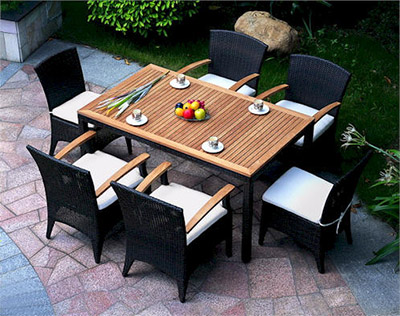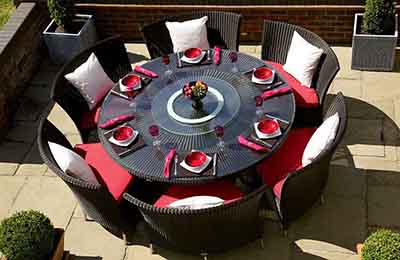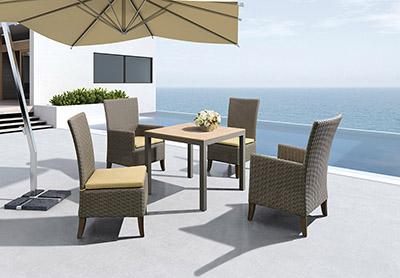Rock climbing basic equipment read the full text >>
Master Rope: A combination of climbers, protection points, and protectors. The main rope is an indispensable lifeline for rock climbing protection.
Inside the main rope is a multi-strand nylon rope wound together, and the outer rope is covered with SHEATH to fix and prevent abrasion.
Main ropes can be divided into dynamic ropes and static ropes, which have different elasticities. The elastic coefficient of the power rope is 6% to 8%. The 100-meter power rope can extend 6 to 8 meters when the force is 80KG, so that the climber will get a buffer when it falls off and reduce the impact force. Power rope is the main tool for all kinds of rock climbing activities. Static ropes have very little ductility, about 2% elasticity, and are generally used for descent and caving.
Only master ropes that have been tested with UIAA or CE and carry their certification mark are available for use and do not use master ropes of unknown history.
Precautions for use of master ropes: Absolutely avoid transverse cutting on sharp rock corners; do not step on or drag on the ground to prevent cuttings, fine sand from entering the fibres to cause internal wear; avoid contact with oil, alcohol, gasoline, paint and Acid and alkali chemicals; check before and after each use, regularly eliminated; when not in use, store in a cool, dry place.
Seat belt: worn on the climber, carrying the weight and momentum resulting from the fall or fall of the climber. The belt of the seat belt is the force part, and the other leg belts are designed for comfort and convenience.
When wearing the seat belt, be sure to wear the belt back from the belt buckle, otherwise there will be a risk of pulling open when the force is applied; the length of the lead after the reversal must be more than 10 cm, and if it is shorter than 10 cm, the larger model should be changed.
Before climbing, the climber and the protector should check with each other whether the seat belt is properly worn. Only the belt and the protective ring are load-bearing. Other parts cannot bear the weight of the human body; the weight of the equipment ring is less than 5 kg. Belts with wide thick sponge pads on the belts and legs are comfortable and heavy, suitable for indoor climbing and alignment; need lightweight seat belts for athletic climbing; and need to consider the number of equipment rings for traditional climbing or equipment climbing. And location is appropriate.
Iron lock: Metal rings that can be freely opened and closed, connecting all kinds of protective equipment and equipment together.
The screw lock can lock the iron lock door in the closed state when fastening the screw, avoiding the risk of accidental knocking off; the ordinary iron lock does not have a screw thread device, light weight and convenient operation, and can be used for temporary protection points. The use of ordinary locks for fixed protection must follow the principle of double iron locks and open doors.
The longitudinal tensile force of the iron lock is greater than the horizontal tensile force; when the iron-locked door is opened, the longitudinal tensile force is reduced; the iron-locked door is the weakest link and cannot be directly subjected to force. The correct way to use it is to keep the iron lock door closed and force it in the longitudinal direction.
Avoid falling from high altitude or hard object impact; this will bring internal cracks and cause the iron locks to become obsolete. In the event of a possible fall in the Pioneer Climb, the climber should directly connect the master rope to the seat belt and not use the iron lock as an intermediate link. Using UIAA or ICC certified iron locks, the history of iron locks is unclear.
Protector: When the main rope passes through the protector in the correct way, its special construction can increase the friction force, so that the brake end of the main rope needs only a small grip force to control the greater weight of the stressed end.
The eight-shaped protector was most commonly used before, but it would cause the main rope to be twisted and twisted repeatedly. ATC solved this problem well. GRIGRI, REVERSO and other protectors will lock under certain conditions, but they must be used correctly. Ensure that the master rope passes in the correct way and distinguish between the braking end and the stressed end; for the protector that cannot be self-locking, always use the braking end of the master rope during use.
Strap: A flexible band that is made into a closed loop of varying length by mechanical suturing or hand-knotting to provide a soft connection between the devices.
The strength of the mechanical stitching is greater than manual knotting, but the manual method is free to adjust the length of the webbing to suit the needs. The main rope in motion cannot pass through the flat belt directly. Otherwise, the frictional heat brought by the movement will damage the flat belt. When the fixed protection point is set up, two or more temporary protection points may be connected by flat belts. At this time, attention must be paid to the connection mode of the flat belt to distinguish the main stress point from the standby stress point; and to ensure that a temporary protection point fails. Does not affect other protection points, does not affect the overall protection effect. (see anchor)
Fast hanging: The two ends of the flat belt are connected to one iron lock to become fast hanging. When using, one end is buckled into the protection point, and the other end is connected to the human safety belt or the main rope, which brings convenience to the operation.
The iron locks on the two ends of the hooks are not threaded, and there is a risk of accidentally opening or retracting the pressure. Therefore, when only one hook is fastened, it cannot be used as a fixed protection point. Quick-hanging is used as a temporary protection point in pioneering climbing or traditional climbing routes. It is very important for the main rope to be buckled and the direction of the quick-hanging opening to be used. The main rope is required to penetrate between the fast hanging wall and the rock wall and pass out from the outside, that is to say, the rope head at the end of the climber is on the outside; if there is a lateral direction of the rope, the iron lock door of the quick-hanging buckle end should face towards the course. The opposite direction, for example, the route is from left to right, the iron lock opening must be to the left. This will prevent the rope from pressing the iron lock door when it comes off.
Rock plugs: metal products of different sizes and shapes can be placed in rock formations, caves, stone bridges, etc., and fixed to become protective points.
To place rock plugs as protective points requires extensive equipment experience. Operators must be very careful to ensure that the plugs do not move or come out in the direction of possible forces.
The rock plugs without mechanical components are mainly used in their own anisotropic asymmetry and shape changes inside the rock joints and are fixed in the narrow joints.
The shape and size of the mechanical plug can be controlled to enter the rock seam in the contracted state, and it can be stuck after bouncing. The operation is convenient and the application scope is wide. It is a good choice for climbing the traditional route.
Familiarity with the diameter and application range of various types of rock plugs will greatly increase the speed of operation, and can be marked on rock plug rods if necessary.
Pitonite: Provides another way to establish a protection point; one is a wedge, which provides protection by striking the wedge into the rock seam, and the other is a ring, which can be attached to a lock or webbing. It should be reminded that the two pegs that knocked into the same rock crack have the possibility of splitting the rock.
Expansion nails: Using impact drills and hammers, the expansion nails can be driven into a single piece of rock, and the mounting tabs become a very solid point of protection.
Hanging piece: One side is fixed on the rock wall by expansion nails or screws, and the other side can be buckled into the iron lock or fast hanging, or connected with the flat belt; it is an important part of the protection point.
Magnesium powder bag: auxiliary equipment, magnesium powder can absorb the sweat on the hand and rock surface, increase friction.
Bouldering pad: The protective measures in the bouldering exercise provide cushioning and shock absorption.
Inside the bouldering pad are two or more layers of sponges. The top is a closed sponge, and the bottom is a thick open sponge. The soft sponge causes the fallen person to subside instead of dispersing the pressure, which may easily hurt the wrists and ankles. Therefore, the boulders should be placed on the sponge layer upwards. Boulder mats are needed for places that may fall off; if the number is not enough, the protector can drag the mats along with the climber's movements.
Helmet: Effectively prevents head injuries caused by falling rocks and abnormally falling postures. The helmet must be worn properly to protect the forehead and the forehead. The falling rock must not look up or hold your head with your hands. If you can't hide, let the helmet work.
Rock climbing shoes: special rubber soles, friction increased greatly. From ordinary shoes to rock climbing shoes is an important change to improve the level of climbing.
When you use it, you should select a small number and wear it tightly around your feet. This will make your feet become a whole, which will help you to enhance your foot feeling and make it easier for you to accurately point and apply force. There are a wide variety of rock climbing shoes that are adapted to different rock types, rock wall angles, and different climbing styles.
Patio Dining Set
Patios and decks are perfect outdoor gathering areas. If you enjoy entertaining, why not treat your guests to an alfresco dining experience? A patio dining set allows guests to pull up a seat and enjoy savory treats and rich desserts. Whether you cook or cater, your friends and family are sure to relish the feel of a cool breeze and the warm sun as they enjoy this outdoor dining experience.
· RUST-FREE ALUMINUM FRAME
· ALL-WEATHER HANDWOVEN WICKER
· HIGH UV RESISTANT WICKER
· EASY TO CLEANAND CARE
· 100% WATERPROOF FABRIC
· 2 YEAR WARRANTY
Patio dining set has many options. Round table, Square table, Armchair, armless chair, You can be free collocation by yourself.




About us:
1.our factory is more than 20000 square meter big.
2. Our showroom is about 800 square meters.
3. we have professional sale team and more than 200 workers.
4. The capacity of our factory is 60 containers/month.
5. we attended CIFF furniture fair and canton fair.
Welcome your inquiry for further discussion.
Patio Dining Set,Rattan Dining Set,Garden Dining Set,Outdoor Dining Set,Patio Modern Furniture,Restaurant Dining Set
Golden Eagle Outdoor Furniture Co., LTD. , https://www.geoutdoor.com